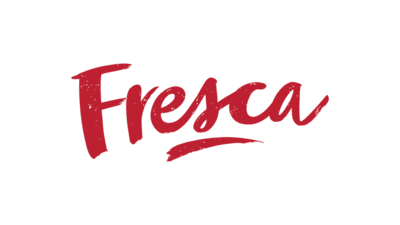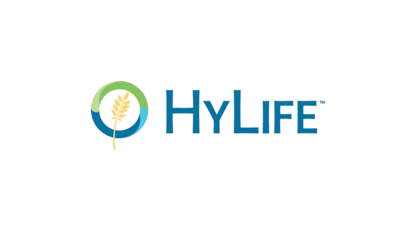In any manufacturing facility, the frontline workers are the pulse of the plant floor. They’re closest to each line and process, and are also therefore often the first to notice when something goes wrong. Yet, the inherent nature of processes can sometimes make it difficult to have visibility into issues. In many cases, they’re not detected until they’ve compounded and become complex problems with far-reaching consequences.
Arming your operators with the right tools enables them to not only spot minor issues before they worsen, but it also empowers them to be more efficient in their roles to drive better productivity overall. Using digital plant management solutions gives them meaningful insights into what’s going on across their lines, providing them the autonomy to suggest better solutions, step in and solve issues, or elevate problems when needed.
Ultimately, the success and engagement of frontline operators is key to profitability. Having operators who are attentive and equipped with the right tools will lay the foundation for facility-wide improvements. Plant management solutions have been proven to increase transparency and visibility of plant performance on the front line, resulting in process efficiencies and monetary savings.
In this download, we’ll discuss how four SafetyChain customers provided their frontline operators access to real-time production and quality data, resulting in an enhanced culture of data transparency and significant operator-driven savings, including:
- How Beyond Meat improved their pepperoni drying process for a 60% increase in salable product
- How Ajinomoto increased their CPK to 1.3, representing very little waste, in just two weeks
- How Death Wish Coffee solved a challenging packaging scrap issue and reduced their scrap by 70%
- How Brakebush operators recognized an upshift in weights, resulting in $2M in savings
Beyond Meat Increases Saleable Product by 60%
Beyond Meat is a fast-growing plant-based protein production facility. The company has three locations which produce plant-based products for other owned, dedicated, or co-manufacturing facilities. Their Devault, PA facility is the site for the majority of their final processing of pea proteins to create saleable productions.
Lengthy, Inefficient Drying Processes
One of the most time-consuming steps in the processing of their plant-based pepperoni products was drying. Operators suspected there were inefficiencies that could be addressed, but it wasn’t until they were equipped with tools to unlock better insight into the process that they saw the potential for a workable improvement.
Analyzing Data & Simplifying the Drying Process
By implementing SafetyChain, Beyond Meat was able to generate forms that tracked the various processing steps for their products, including the plant-based pepperoni. In a newer process, the pea protein dough was made into a chub, then sliced. Following the slicing process, individual pepperoni rounds were sent through a drying process, just like normal pepperoni slices. SafetyChain monitoring revealed loss on this process was significant — 60% from drying alone. This prompted an operator to look more closely at the data, which then spurred the creative solution of drying the entire chub before slicing.
Business Impact: 60% Increase in Saleable Product
The Beyond Meat leadership team did some further investigating and confirmed that drying then slicing would indeed be feasible. In doing so, they were able to reduce the loss in the drying process from 60% to 22%, resulting in a 60% increase in saleable product.
With labor and staffing challenges reaching a fever pitch in manufacturing, the ability to get more product into saleable boxes is critical to staying competitive and driving margins. Beyond Meat’s new process decreases the amount of moisture lost by drying the whole chub instead of individual slices. Gaining an additional 60% of saleable product is a tremendous improvement in today’s market.
Most notably, this process improvement was suggested by an operator on the production floor. This is a testament as to how significantly a process can be transformed when employees have the right tools. By empowering the line workers who are deeply entrenched in the processes with real-time data, manufacturers can drive meaningful changes throughout their facilities.
Ajinomoto Increases CPK to 1.3
Japanese multinational food and biotechnology corporation Ajinomoto produces packaging, seasoning, and other products for companies across the globe. Their operations span 35 countries and regions, with one of their stateside facilities located in Oakland, MI.
Paper-Based SPC Impedes Visibility
At the Oakland facility, all of the plant’s statistical process control (SPC) data was being recorded on paper, with minimal tracking and trending. Data was simply written down, then papers were filed away and seldom revisited unless major issues developed. Leadership knew there was potential for better insights into key data, which would ultimately allow operators better visibility into areas of improvement.
Concerning CPK Trends & Operator-Driven Solutions
To drive better insights and results, the Oakland facility deployed SPC on simple inspection forms using SafetyChain, equipping their operators with in-app charting capabilities. Within the first few weeks, initial measures revealed a CPK of 0.2.
In manufacturing, many facilities use process capability index (CPK), a statistical measurement that predicts the ability of a process to produce output that conforms to specifications. Just as a refresher: the higher the CPK, the greater the capability of the process to meet its requirements. As such, a CPK of 0.2 represents a very high percentage of waste.
After this concerning discovery, leaders asked operators to notify supervisors during runs when they saw products trending out of spec via in-app charting. To management’s surprise, operators were able to achieve a CPK of 1.3, indicating very little waste, after just a few weeks.
Business Impact: Hundreds of Thousands in Savings
This case is unique in that the improvements were entirely operator driven. Management provided the tool for operators, and while they knew the CPK was an area of concern, they focused on higher-priority tasks before revisiting it. It was a surprise, then, when operators revealed they had been making small adjustments over time to improve the metric little by little. Small changes like the proper set up of machines and more thorough documentation have paved the way for significant improvements. These will in turn help the company reduce waste of raw materials with savings of several hundred thousand dollars per year. Improved product quality has also been achieved, resulting in increased customer satisfaction.
Death Wish Coffee Reduces Packaging Scrap by 70%
Just over a decade old, Death Wish Coffee has experienced rapid growth since being founded in 2012. The company is headquartered in Saratoga Springs, NY, and is known for their bold, flavorful Fair Trade Certified coffee.
High Rejection Rates Leading to a Spike in Packing Scrap
Since deploying SafetyChain to record and track scrap, their team discovered that they were losing 750 pounds of product per day due to over-pack. They tightened their specifications around pack weight, but this then led to an increase in packing material scrap as more packages were being rejected by the scale for being under or overweight.
Teaming Up with Operators & Digging into the Data
The Death Wish Coffee team knew they needed to address the packing material scrap, so they investigated the issue by involving operators in their discussions to find a solution. They started by taking a closer look at the packing machine, which led them to discover that having the specifications too tight caused it to constantly adjust, similar to a control loop oscillation, instead of setting on a desired setpoint.
Normally, a control loop adjusts by overshooting the setpoint by a bit to one side and then correcting and overshooting to the other side. When it’s working properly, the amount of overshoot reduces each time and the system lines out on the setpoint. Like guardrails on the road, when these limits are too close together, it can prevent the loop from operating properly and settling in on the setpoint as the system ends up bouncing from guardrail to guardrail. The insights that the SafetyChain system provided prompted operators and decision makers to come together and make slight adjustments to specifications, resulting in better control that would allow the machine to settle on the desired setpoint of one pound.
Business Impact: $37,000 in Savings
Death Wish Coffee continues to monitor pack weights and scrap via SafetyChain dashboards daily and leverages the data the system provides as a key talking point for management meetings. They also continue to use the data to look for additional improvement activities. For now, this most recent finding and intervention has enabled them to reduce packaging scrap from 1,000 impressions to 300 impressions per day. At 18 cents per impression, this equates to a savings of roughly $37,000 per year.
Brakebush Operators Uncover & Address an Upshift in Weights
Since 1925, Brakebush has been a trusted value-added processor of high-quality chicken products. They supply chicken to customers of all sizes, from smaller foodservice kitchens to national chains. In many manufacturing companies with a longstanding history, certain processes and routines have become familiar, but there are opportunities to empower operators just waiting to be leveraged.
Limited Insight into Weights & Counts
At Brakebush’s Irving, TX facility, there was minimal visibility into box weights and counts on their poultry production lines. They had been determining total output based on order fill quantity, but weren’t tracking individual weight and total packaging count. With limited visibility into individual weights and counts, it was difficult to see where they stood – and thus, where they could improve.
Tracking & Trending Weights to See Where Gains Could Be Made
To track packaging weights and total package counts, Brakebush’s Production Manager decided to implement SafetyChain. Marination and box weights were entered into the system, and trending graphs were created. These tools enabled production to visualize actual output numbers, which gave them the information they needed to develop a benchmark. The tracking and trending method was piloted on one production line, and has since been moved to three lines for added visibility across a broader production spectrum.
Business Impact: Savings of Over $2M
Since deploying SafetyChain, the Brakebush team has realized how the visualization of data can play a significant role in helping line operators understand where gains can be made. Because average weights and box counts are now accessible via graphs, operators on the floor are better equipped to make decisions and course correct when the line is trending above tolerances. They’ve been better able to maintain target weights by making real-time adjustments. This in turn has led to a 1% yield improvement, resulting in an estimated savings of over $2M, based on an improvement of 60 pounds per hour over three processing lines of chicken breasts and thighs.

